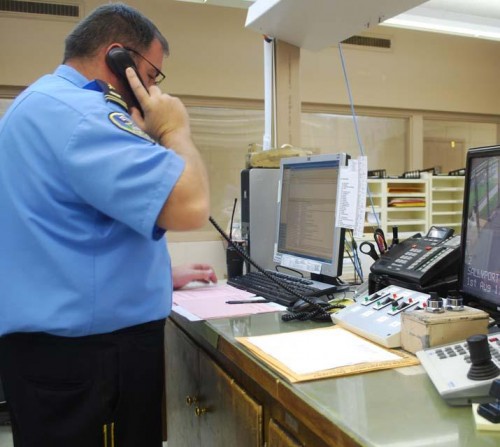
Laf. detention center could be refurbished
August 9, 2011New Orleans Museum of Art (New Orleans)
August 15, 2011Hurricane charges on Entergy bills are explained as being both compensation and shared expense as somewhat of an insurance policy. While some customers might complain that they are being charged when they experienced no damage, Entergy officials contend it is a shared expense that helps everyone.
Last week a Gray woman, who said she would not talk if her name was published, charged that Entergy was imposing on her expenses for hurricane damage from 2005 and 2008 – the years of Katrina, Rita, Gustav and Ike – that she neither caused nor experienced from devastating weather events those years.
The woman had not spoken with anyone from Entergy for an explanation and claimed if they knew she brought it up they would come after her and turn off her electric supply. “But this has been going on for a long time,” she said.
Upon inspection, it was found that Entergy bills viewed for both business and residential use carried four entries with reference to hurricanes in 2005 and 2008.
On both the commercial and residential statements, the first pair of entries shared a common 2005 and 2008 hurricane offset charge, which is actually a credit, of 3.1 percent and 2.2 percent respectively and applied evenly for the both office and the house.
The second pair of hurricane-designated postings was referred to as a LURC 2005 hurricane charge at 9.9 percent of the current billing amount and a LURC 2008 hurricane charge of 5.9 percent for both residential and business services.
“It is a little confusing,” Entergy spokeswoman Molly Jahncke said. She explained that the entire matter originated with the Louisiana Utilities Restoration Corporation Act of 2007, also known as Act 55.
Jahncke said that following Hurricane Andrew in 1992, the extent of damage and associated costs eventually resulted in the insurance industry refusing to cover utilities for hurricanes.
In response the Louisiana Public Service Commission approved a plan that would involve all Louisiana Entergy customers on the Entergy grids for statewide service in paying toward a fund to both repair past damage and invest in future coverage as somewhat of a self-insurance plan.
“The short of it is that the cost for the bond financing and the offset is a credit that has to do with paying [customers] back for tax and interest,” Jahncke said. “The consumer does not absorb that because there is a new charge from 2005 that is going to be for restoration of the system following hurricanes Katrina and Rita. The 2008 is the same sort of thing with the charge and offset for Gustav and Ike.”
With a LPSC hurricane contingency fund, Entergy is able to set aside money for storm events. “But these four hurricanes were incredibly devastating and went beyond our hurricane reserves,” Jahncke said. “Because we cannot be insured, we kind of pay in advance because everything has to be restored immediately.”
LPSC rationale for spreading the expense, based entirely on the percentage of one’s extent of usage, is that because even though a given customer might not have experienced obvious damage at his home or business during one specific storm, he is still part of the operating grid and that it is less expensive for all customers to share the cost this way than attempt to determine who was or was not involved and apply charges to that area hit alone.
The long range unpredictability of hurricanes also suggests that an area not hit this time might be hit next time.
“That is why you are seeing it represented as a percentage of the bill,” Jahncke said. “Act 55 financing is actually a greater benefit to the customer and is saving customers hundreds of millions of dollars.”
The current hurricane credit and charge listings have been closely calculated to appear on bills until August 2018 for the 2005 listings and until 2022 for the entries related to 2008. Charges and projected deadlines are recalculated every six months, so if rates go up or down the hurricane coverage listings would be adjusted accordingly.







